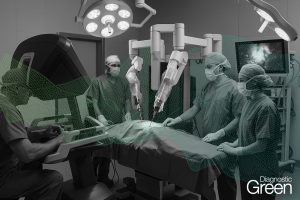Background: In this study, we report a case series of acute macular neuroretinopathy (AMN) associated with COVID-19 infection.
Results: A total of 11 AMN patients (20 eyes) were included in the study. The mean age was 33.8 ± 12.6 years. The average interval between a positive COVID-19 PCR test and the onset of ocular symptoms was 2.8 ± 2.5 days. The mean follow-up period for the patients was 12.5 ± 3.8 weeks. Imaging characteristics of AMN patients following COVID-19 infection included areas of low reflectivity on near-infrared reflectance (NIR) imaging, hyperreflective lesions at the level of the outer plexiform layer (OPL) and outer nuclear layer (ONL) and disruption of the ellipsoid zone (EZ) on spectral domain optical coherence tomography (SD-OCT) B-scans. Visual field examinations revealed parafoveal scotomas that closely corresponded to the clinical lesions.
Optical coherence tomography angiography (OCT-A) demonstrated impaired perfusion in the deep retinal vascular plexus. Fluorescein angiography (FA), indocyanine green angiography (ICGA), and spontaneous fundus autofluorescence showed no significant abnormalities. During follow-up, partial improvement in retinal lesions was observed in NIR imaging and SD-OCT in some patients, but a proportion of patients still exhibited persistent retinal damage and no improvement in visual field scotomas.




